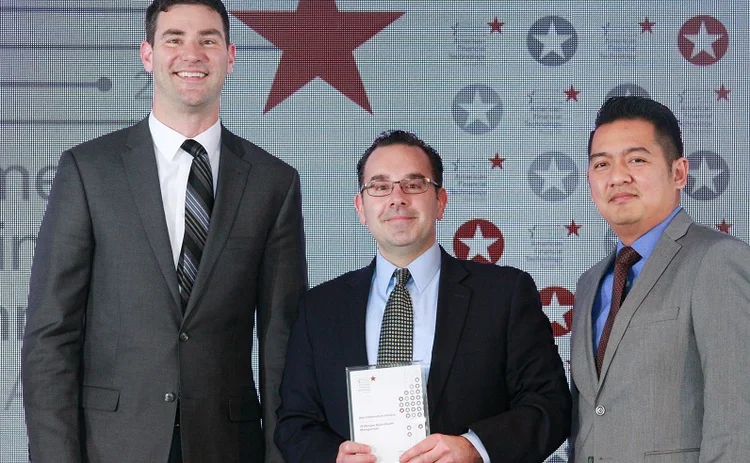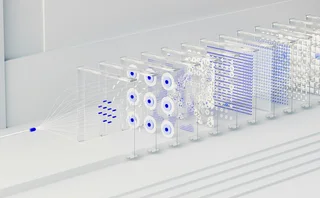AFTAs 2017: Best Infrastructure Initiative—JPMorgan Asset & Wealth Management

The resiliency initiative was, in part, a move to streamline a process the firm constantly has to perform, says the asset manager’s head of production management, Joe Pedone.
“We’ve leveraged some cutting-edge automation techniques to take that manual work, and basically shifted it to the left and made it highly automated and low-resource intensive,” Pedone says. “We’ve reduced up to 80 percent of the work required to execute a resiliency event, which is a significant amount of time. The good news is it’s not just saving on labor but we can be resilient faster.”
The project entailed automating many of the tasks associated with resiliency tests, such as making sure runbooks are updated, the failover event to the secondary data center occurs, and collection of evidence is put in a document repository. The process uses a microservices library, so that when programmers need to undertake a task such as flipping the domain name system over to the secondary server, they do not need to write out a script, but instead can take a pre-written one from the library.
The process used to be manually intensive, Pedone says, and with the number of times JPMorgan has had to undertake resiliency events, it entailed a lot of tedious work. The firm normally runs fail-over tests almost every week for each application it offers, moving from a primary data center to a secondary one.
“Every critical system at JPMorgan is required to have high levels of stability and resiliency. A lot of the work that’s done in the resiliency program has traditionally been manual,” Pedone says. “We’re also required by our regulators to validate and test that this resiliency works at a minimum of an annual basis and in most cases multiple times a year. It generates an incredible amount of labor from preparing for that work, conducting the testing, and doing the validation.”
One of the reasons why the asset manager’s resiliency program moved so quickly was down to the decision to create a team whose sole focus was to build out the automation program. Pedone says development of the initiative took around three to four months, with the first live, fully automated fail-over test occurring in the first quarter of 2017.
Ultimately, he notes, automation is a good strategy for firms looking to improve resiliency systems and says it’s important that it becomes a priority for the industry as a whole.
Only users who have a paid subscription or are part of a corporate subscription are able to print or copy content.
To access these options, along with all other subscription benefits, please contact info@waterstechnology.com or view our subscription options here: https://subscriptions.waterstechnology.com/subscribe
You are currently unable to print this content. Please contact info@waterstechnology.com to find out more.
You are currently unable to copy this content. Please contact info@waterstechnology.com to find out more.
Copyright Infopro Digital Limited. All rights reserved.
As outlined in our terms and conditions, https://www.infopro-digital.com/terms-and-conditions/subscriptions/ (point 2.4), printing is limited to a single copy.
If you would like to purchase additional rights please email info@waterstechnology.com
Copyright Infopro Digital Limited. All rights reserved.
You may share this content using our article tools. As outlined in our terms and conditions, https://www.infopro-digital.com/terms-and-conditions/subscriptions/ (clause 2.4), an Authorised User may only make one copy of the materials for their own personal use. You must also comply with the restrictions in clause 2.5.
If you would like to purchase additional rights please email info@waterstechnology.com
More on Awards & Rankings
AFTAs 2025: Best data provider—Allvue Systems
Product: Private Credit Intelligence
AFTAs 2025: Best IT team—TCW Group
Team: TCW Group’s Investment Technology Team; Project: Engineering Solutions—ABF and insurance launches during Aladdin stabilization
Buy-Side Technology Awards 2025 winner’s interview: 73 Strings
73 Strings’ win in the BST Awards 2025 Best middle-office platform category
AFTAs 2025: Most cutting-edge IT initiative—J.P. Morgan
Project: Vida Beta One
Buy-Side Technology Awards 2025 winner’s interview: S&P Global Market Intelligence
S&P Global Market Intelligence’s success in the first year the Best private markets data provider category has been on offer.
AFTAs 2025: Most innovative third-party technology vendor (operations)—AutoRek
Company name: AutoRek



